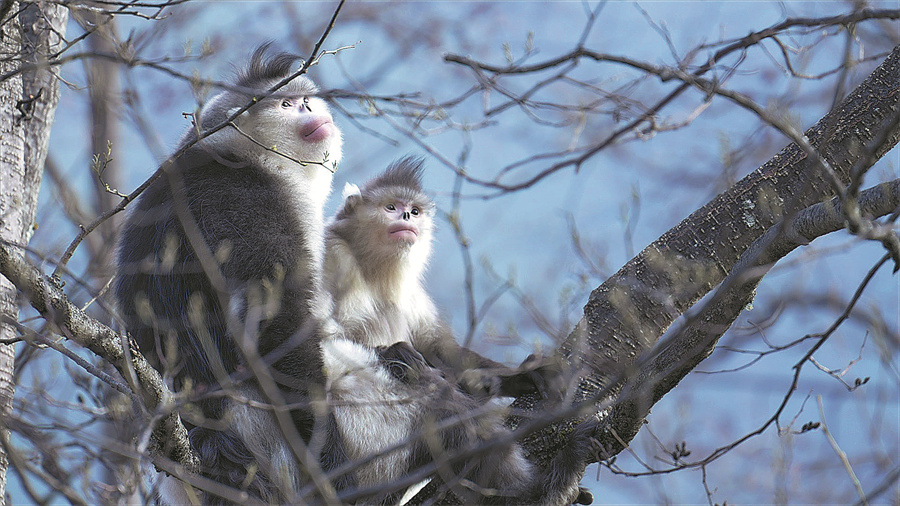Reserve ensures survival of rare monkeys


Deeper understanding
"I like the shutter sounds made by visitors' cameras and phones because that means their images and videos will be spread online and all over the world, making more people fans of this unique species," said Long, now a 68-year-old retiree and honorary chairman of the Chinese Primatological Society.
"More attention brings better protection. Keeping the monkeys alive is still a matter of urgency. Only while they are a living species can we maintain the opportunity to deepen our understanding of them."
The monkeys, dubbed "elves of the snow mountain" by the locals, live at the highest altitudes at which all primates (with the exception of humans) can survive, according to Long.
"High altitude often means extreme conditions and low temperatures. The monkeys don't have much fat, so how they survive is a good question to explore. It also sheds light on how nature's recycling system works," he said.
"The monkeys mainly eat usnea, a type of lichen that contains a substance called chitin, which is also found in the shells of crabs and shrimps. We humans and many other animals can't digest it, but the monkeys can. Usnea (aka "old man's beard") often grows in the woods, so it's eaten and digested by the monkeys, whose feces is broken down by natural processes. The ecosystem doesn't produce waste. Everything is recyclable. Maybe we can learn from it to improve human society."























